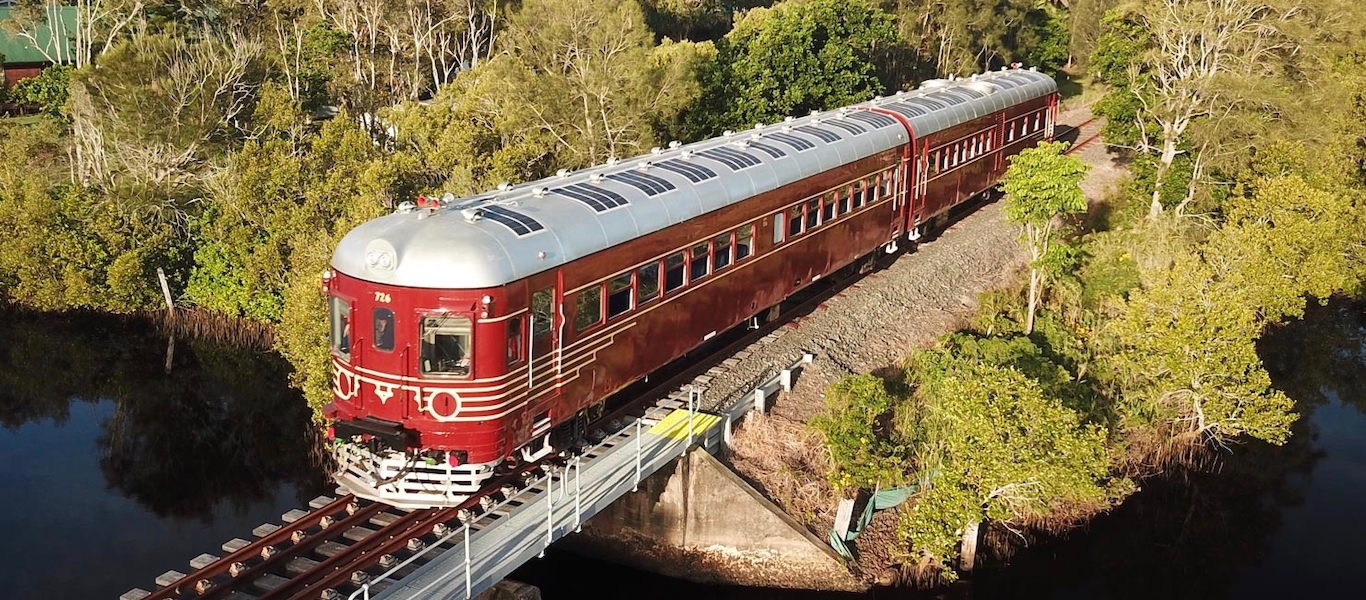World’s First 100% Solar Powered Train

The Byron Bay Railroad Company’s charming 100% solar-powered train has been featured in a Fully Charged video, showcasing the possibility of zero-emission public transport. The train is super efficient, requiring 8.33 watt-hours per passenger kilometer, even with frequent stop–starting. With a 6.5 kW rooftop solar array and a lithium-ion battery on board, in peak solar hours, the train is effectively 100% self-powered.
The Byron Bay Railroad Company’s solar-powered train was brought into service in late 2017, and has operated perfectly since then. The original 1949 train carriages are still used, but have undergone an upgrade from diesel locomotion to battery-electric locomotion, powered predominantly by onboard PV panels.
The train has a 77 kWh lithium-ion battery running at 410 volts. The dual electric motors are US-sourced Parker GVM series permanent magnet AC units, running at 220 kW and producing several hundred Nm of torque. The batteries are fed by a 6.5 kW peak rooftop carriage-top solar PV array, using flexible SunMan eArche panels that conform to the original roof shape of the carriages (see the above image). In peak sunshine hours, the onboard panels can effectively provide enough energy for the train’s duty cycle!
The train runs a simple 3 km route (taking just under 10 minutes) between North Beach station and Byron Beach station, and then back again, typically completing the cycle once per hour. With the help of gentle acceleration, modest cruising speeds, and a bit of regenerative braking, the total energy used for the 6 km round trip is only 5 kWh! In peak sunshine, the panels can in principle collect 6.5 kWh of energy per hour, covering the train’s energy requirements over the same time period.
Bear in mind that this 2-carriage train weighs 77,000 kg and has space for 100 passengers. The 5 kWh per 6 km cycle works out to a remarkably efficient 8.66 Wh of energy per passenger kilometer! For context, the current hypermiling record for the Tesla Model 3 is right around 75 Wh per km, for a theoretical 15 Wh per passenger kilometer (assuming 5 passengers could endure such a feat). That record required steadily cruising the Tesla Model 3 at just under 40 km/h — which is also around the top speed that the train reaches on its 3km run.
Whilst for the Tesla that record required continuous cruising (of almost 1000 km!), the train achieves the same efficiency even with starting and stopping every 3 km! What can we say? The speeds are modest, the route is almost perfectly flat and straight, and trains have very low rolling resistance!
The terminus at North Beach station also has a solar PV array on its roof, with 30 kW peak power. In theory, the train’s 77 kWh battery holds enough energy for 15 runs of 3km each, but at either end of the day, and in the winter months, when train needs a recharge, dual 22 kW 3-phase AC chargers do the job. The overall system generated an excess of 60 MWh of energy in the first year of operation, which was exported to the grid. That’s equivalent to the power requirements of around 17 average Australian 3-bedroom home.
Sourcing : Clean technica.

